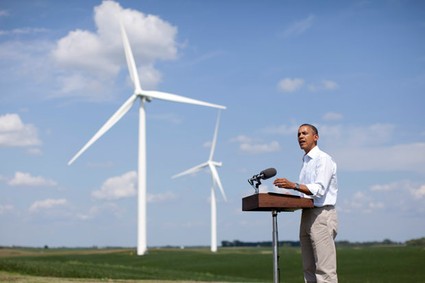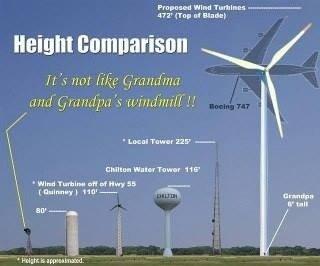The energy market has always been at the forefront of politics, though recent arguments seem like no more than a pissing match between the fossil fuel industry and everyone else. Many decisions have been made not for the overall pros or cons of a particular sector, but based on who can raise more funding—and more hell—in Washington.
Subsidies, Tax-breaks, and the Obama Administration
 The Obama administration has made it a point to support and promote renewable energy resources. In 2012, President Obama’s campaign focused on wind energy as a realistic and effective supplier of power for states like Iowa and Colorado, promising to extend a renewable energy production tax credit while he was in office. Now, in 2014, over $14 billion has been granted to wind energy contractors since 2009, either in the form of this production tax credit, or as part of a renewable energy subsidy afforded by Obama’s stimulus package.
The Obama administration has made it a point to support and promote renewable energy resources. In 2012, President Obama’s campaign focused on wind energy as a realistic and effective supplier of power for states like Iowa and Colorado, promising to extend a renewable energy production tax credit while he was in office. Now, in 2014, over $14 billion has been granted to wind energy contractors since 2009, either in the form of this production tax credit, or as part of a renewable energy subsidy afforded by Obama’s stimulus package.
The idea of subsidizing alternative sources of energy is far from new—the production tax credit (PTC) energy subsidy has been providing 2.2 cents per kilowatt-hour of power generated by turbines for decades. Initially, the subsidies and tax breaks were meant to encourage the construction of the infrastructure so that the companies could be competitive and sustainable in the energy market. It turns out that the system has some kinks to be worked out.
For one, any single kilowatt-hour of energy produced by a new wind farm, regardless of whether it is used or not, receives a tax credit for the first ten years of its operation. In fact, the wind farm need not be fully operational, as long as construction has started, to receive benefits. So for wind farms that yield high power outputs in the middle of the night when most people sleep with minimal power needs, or those in early construction stages, the company is still being supported by government subsidies. Subsidies and tax breaks are enticing offers for investors, as even low-output power plants can still produce revenue.
Significant federal funds have been pumped into the wind energy sector; however, the end of 2013 brought an end to the PTC. The loss of this cushioning has already led to a decrease in new infrastructure developments in Texas, and will likely hinder future developments across the nation. Without this government intervention, key wind-frastructure may never see the light of day.
Opposition and the Lobbying Power $truggle
“Realistically, in this day in age and for an area like southeast New England, any kind of development project is going to encounter opposition, this is particularly true for energy projects” says Mark Rodgers, the key correspondent for Cape Wind. In Massachusetts alone, over fifteen anti-wind groups have formed, including “Save our Sound”, “War against Wind”, and “Counter Cape Wind”. These groups have focused on negatives of the sector, including potential habitat destruction for native marine species, the interruption of migration routes, and the visual destruction of the landscape.

“Save Our Sound” has produced images to highlight the visual disruption cape wind would cause, bringing attention to the turbine’s massive size. In the case of Cape Wind, as well as the windustry in general, “project opponents have had their voices amplified because they have been able to raise and spend upward of thirty million dollars to fight this project. Yet that opposition of a powerful few obscures the larger truth, that Cape Wind has unprecedented levels of support for an energy project in New England, among the public, environmental organizations, trade and labor organizations and from elected officials. I believe this support will grow and opposition will weaken when the project is built and is successfully delivering important public energy, environmental and economic benefits”, says Rodgers.
Lobbying groups in the energy sector are divided between electric utilities, gas and oil companies, and renewable groups. According to OpenSecrets, reported by Stephen Lacey of Renewable Energy World, the first category was able to spend over $150 billion. Coming in a close second, $112 billion was spent by gas and oil groups, while renewables spent a mere $40 billion on lobbying efforts. The fossil fuel industry has been urging for the expiration of the PTC, a win they championed at the start of this year.
Funded by private sources including the Koch brothers, the American Energy Alliance (AEA) has been acting to educate Americans on the benefits of the fossil fuel industry while discounting renewables. As expressed by the AEA President Thomas Pyle in a letter to Senators colluding to end the PTC in December 2013, “For decades, American taxpayers have bankrolled the wind industry, and the time has long past to allow the PTC to run its course. This tax credit was always intended to be temporary, but Big Wind has grown addicted to taxpayer subsidies, spending millions year after year to extend and even expand this unnecessary and expensive taxpayer giveaway and fleecing the American people out of billions of dollars along the way…It is time to put an end to wind welfare and ensure that the wind PTC blows away once and for all.”
Perhaps the only way to end the Koch-fight between renewables and the fossil fuel industry would be to expel all government tax breaks and subsidies from the entire energy market. The power play would reveal the industries that are truly capable of being competitive in the long-term. While the fossil fuel industry would initially champion the competition, what would happen when the remaining fossil fuels ran out—what then?
